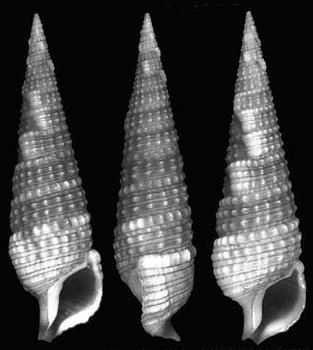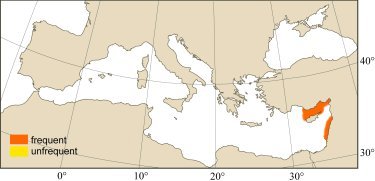
|
Relevant Synonyms
Misidentification
|
|
| photo: S. Gofas / Coll. G. Spada |
|
SHORT
DESCRIPTION
color :
pale buff background with irregular brownish areas, the interspaces between spiral cords usually darker.
common size :
commonly 20-30 mm high, up to 40 mm in Mediterranean specimens and 50 mm in the Indo-Pacific. |
DISTINGUISHING CHARACTERISTICS
BIOLOGY / ECOLOGY
habitat :
in its original range, the habitat is on muddy to sandy bottom from shallow water to ca. 60 m, mostly between 20-60 m. The Mediterranean habitat seems to be quite the same, on the continental shelf. |
|
1st
Mediterranean record
|

|
|
DISTRIBUTION
|
ESTABLISHMENT SUCCESS
speculated reasons for success :
|
|
|
MODE OF
INTRODUCTION |
IMPORTANCE TO
HUMANS |
|
KEY
REFERENCES
|
|
|
 Cerithium kochi Philippi, 1848
Cerithium kochi Philippi, 1848